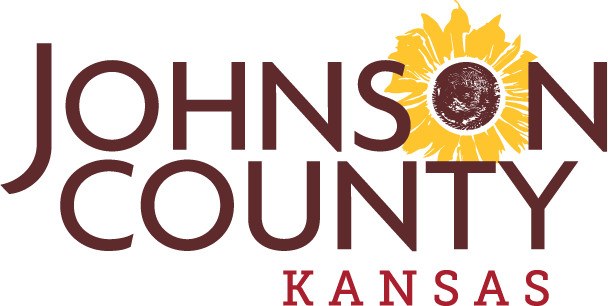2023 Heat Mapping Campaign

Launch of Interactive Dashboard
Johnson County Department of Health and Environment is excited to announce the interactive dashboard that connects the Spot the Hot community work to the 2023 Heat Mapping Campaign results is officially here. Click the button "Explore the Dashboard" below to explore the mapping area and use the search tool to look up locations that are important to you and your community.
Using the interactive map and data from the heat mapping report, our next steps are to strategize with other departments, partners, and community members on ways to mitigate the dangers of extreme heat in area neighborhoods.
2023 Heat Mapping Report Results
On Aug. 12, 200 volunteer Community Scientists traveled 31 unique routes to collect over 200,000 temperature and humidity data points throughout 310 square miles of Johnson and Wyandotte counties in Kansas to identify heat islands as part of the 2023 National Oceanic and Atmospheric Administration (NOAA) Urban Heat Mapping Campaign.
Findings included large temperature differences between the hottest and coolest communities throughout the day, with the biggest difference, 11.7 degrees F, occurring in the evening. Though the recorded high temperature for the Kansas City metropolitan area on August 12th was 91 degrees F during the afternoon, the official records don’t tell the whole story. Data from the Heat Mapping Campaign clearly demonstrate that temperatures can vary substantially throughout communities in the region. In the hottest area on the map, the afternoon temperature approached 97 degrees F, while the coolest areas were about 85 degrees F.
The heat index (what the temperature feels like when the effect of humidity on air temperature is included) reached over 100 degrees F in the hottest neighborhoods in the afternoon, while staying under 90 (89.7) degrees F in the coolest parts of the counties.
"It's critical for city and county leaders to understand how environmental factors impact our residents differently, depending on where they live. We'll be glad to get the results of this study for help in planning for a more resilient future." -Mayor Sollie Flora, Mission
What are heat islands?
Heat islands are hotspots in our neighborhoods where temperatures are higher due to a lack of tree cover, extensive pavement or concrete and other factors. These areas can be up to 20°F hotter than nearby spots right down the street.
Identifying these areas helps our community and local decision-makers take action to reduce the health impacts of extreme heat, which often disproportionately impact some of the most vulnerable members of our communities: infants and young children, people 65 years of age and older, people who are overweight and people who are ill or on certain medications. Additionally, extreme heat can have severe consequences for our community members who work outside.
Frequently Asked Questions
Why are we conducting the campaign?
Urban areas are especially prone to high temperatures due to a combination of hard surfaces (buildings, roads), limited vegetation and heat-producing factors like car use and industrial activity. This problem, known as the urban heat island effect, can increase issues for human health, infrastructure and quality of life.
Understanding how temperatures vary based on qualities of the natural and built landscape can inform how we reduce the impacts of rising summer temperatures in our communities.
How are data collected?
Data are collected using a sensor mounted to the passenger side of a car (note: the sensor is held in place by the window; nothing is permanently affixed to the car). The sensor records the ambient temperature, humidity and GPS location every second as volunteers transport the device through pre-planned routes.
What will the counties do with the data?
The final product of the Kansas Community Heat Watch campaign is a set of high-resolution air temperature and humidity data, area-wide heat maps and a report by CAPA Strategies that provides a detailed analysis of heat distribution in the morning, afternoon and evening. The maps are produced by combining satellite imagery and air temperature and humidity readings collected by our volunteers on campaign day.
The maps will help our community and local decision-makers take actions to reduce the health impacts of extreme heat, which often disproportionately impact some of the most vulnerable members of our communities: infants and young children, people 65 years of age and older, people who are overweight and people who are ill or on certain medications. Additionally, extreme heat can have severe consequences for our community members who work outside.
For more information about the mapping process, view this publication.
Visit NOAA's website for more information about the project.
Thank you to our community partners
Thank you to the community-based organizations who have helped us plan and execute the heat mapping campaign. We appreciate all their hard work and dedication to the project and their commitment to making Johnson County a healthier and more equitable place for all who live, work and play in our community.
- Bridging the Gap
- CAPA Strategies
- City of Mission, Kan.
- City of Overland Park, Kan.
- CleanAirNow
- Groundwork Northeast Revitalization Group (Groundwork NRG)
- Heart to Heart International
- Johnson County Department of Technology & Innovation, Automated Information Mapping System group (AIMS)
- Johnson County Museum
- K-State Research and Extension, Johnson County
- Mid-America Regional Council (MARC)
- National Oceanic and Atmospheric Administration (NOAA)
- National Weather Service (NWS)
- Unified Government of WyCo/KCK Department of Planning & Urban Design
- Unified Government of WyCo/KCK Department of Public Works

